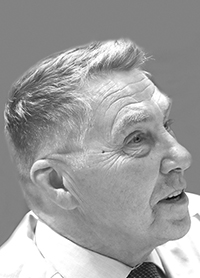HYDRODYNAMIC CHARACTERISTICS OF ELITE SWIMMERS OF DIFFERENT GENDERS AT FINAL PERIOD OF TRAINING FOR MAJOR COMPETITIONS
Keywords:
swimming velocity, active hydrodynamic resistance (active drag), mechanical power.Abstract
Hydrodynamic characteristics of elite female and male swimmers were determined by the four variants of the perturbation method at the phase of decrease in training load before the 2016 Olympic Games in Rio de Janeiro and the 2017 World Championship in Budapest. Further, the ten best swimmers of both genders were selected by their maximal swimming velocity (v0max) in all athletic strokes (80 subjects altogether). As a result of the proper processing of the data, statistical models of quantitative values of active drag force (Fr(ad), the dimensionless hydrodynamic coefficient (Cx(ad)) and total external mechanical power (Pto) were determined. In all four strokes, due to their essential superiority in Pto, men have higher magnitudes of v0max than women. Naturally enough that at higher v0max elite male athletes have greater Fr(ad), too. Again, in terms of Cx(ad), there was no statistical difference between women and men within each of the strokes. Consequently, regardless of their gender, elite swimmers may be stated to be equally successful in mastering proficient swimming techniques of all athletic strokes. Besides having an independent scientific significance, the statistical models of Fr(ad), Cx(ad) and Pto allow to increase considerably the quality of the individual analysis of these indicators on athletes of different performance levels. The key criterion for such analysis at the phase of decrease in training load is Cx(ad), which determines the hydrodynamic efficiency of the individual swimming technique in any of athletic strokes in terms of quantity.
Keywords: swimming velocity, active hydrodynamic resistance (active drag), mechanical power.
References
Barbosa T.M., Costa M.J., Marques M.C., Silva A.J., Marinho D.A. A model for active drag force exogenous variables in young swimmers. Journal of Human Sport & Exercise. 2010. Vol. 5(3). pp. 379–388.
Bideau B., Colobert B., Nicolas G., Le Guerroué G., Multon F., Delamarche P. Development of an Active Drag Evaluation System (A.D.E.S.). Proceedings IX International Symposium on Biomechanics and Medicine in Swimming. St Etienne. 2003. pp. P. 51-56.
Kolmogorov S., Duplisheva O. Active drag, useful mechanical power output and hydrodynamic force coefficient in different swimming strokes at maximal velocity. Journal of Biomechanics. 1992. Vol. 23. pp. 311-318.
Kolmogorov S., Rumyantseva O., Gordon B., Cappaert J. Hydrodynamic characteristics of competitive swimmers of different genders and performance levels. Journal of Applied Biomechanics. 1997. Vol. 13. pp. 88-97.
Kolmogorov S.V., Vorontsov A.R. The methodology of control over preparedness of elite swimmers based on relationship between the power of active metabolism, mechanical power and efficiency and swimming velocity. Proceedings XIII International Symposium on Biomechanics and Medicine in Swimming. Tsukuba. 2018. pp. 400–407.
Kjendlie P.-L., Stallman R. Drag characteristics of competitive swimming children and adults. Journal of Applied Biomechanics. 2008. Vol. 24. pp. 35-42.
Marinho D. A., Barbosa T. M., Costa M. J., Figueiredo C., Reis V. M., Silva A. J., Marques M. C. Can 8-weeks of training affect active drag in young swimmers? Journal of Sports Science and Medicine. 2010. Vol. 9. pp. 71-78.
Nicolas G., Bideau B., Colobert B., Berton E. How are Strouhal number, drag, and efficiency adjusted in high level underwater monofin-swimming? Human Movement Science. 2007. Vol. 26. pp. 426–442.
Sacilotto G., Ball N. and Mason B.R. A Biomechanical review of the techniques used to estimate or measure resistive forces in swimming. Journal of Applied Biomechanics. 2014. Vol. 30. pp. 119-127.
Xin-Feng W., Lian-ze W., We-Xing Y., De-Jian J., Xiong S. A new device for estimating active drag in swimming at maximal velocity. Journal of Sports Sciences. 2007. Vol. 25(4). pp. 375-379.

Additional Files
Published
Versions
- 07-03-2022 (2)
- 01-02-2022 (1)

